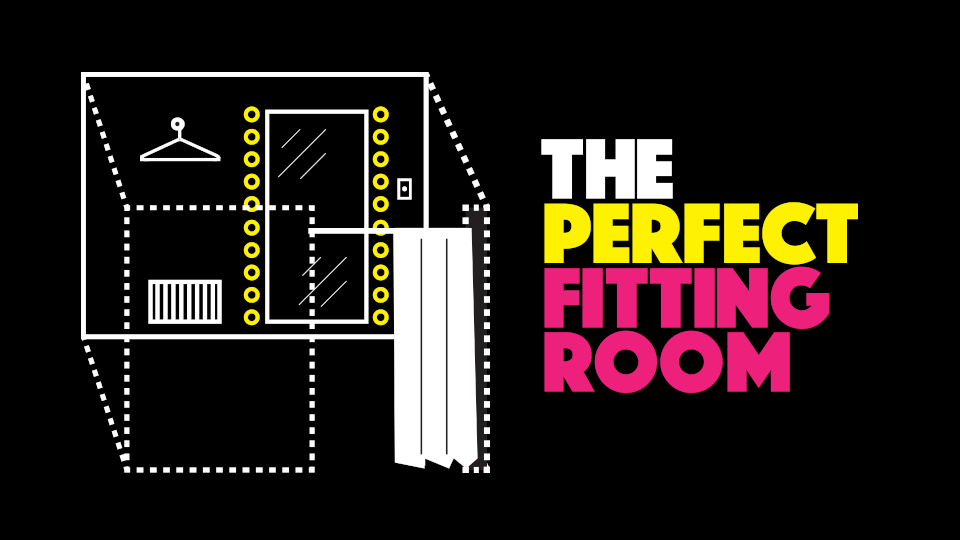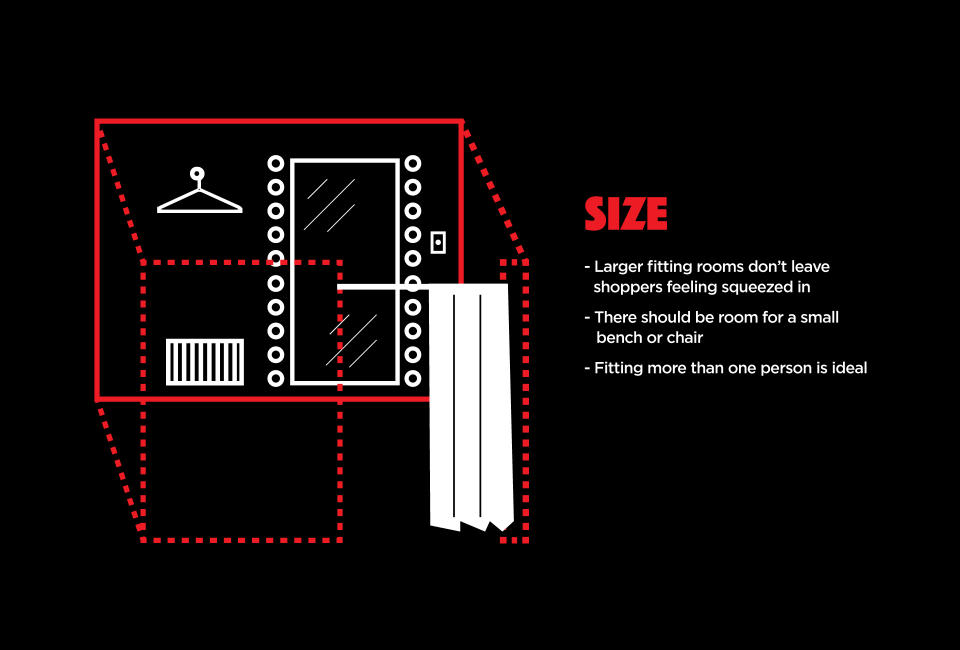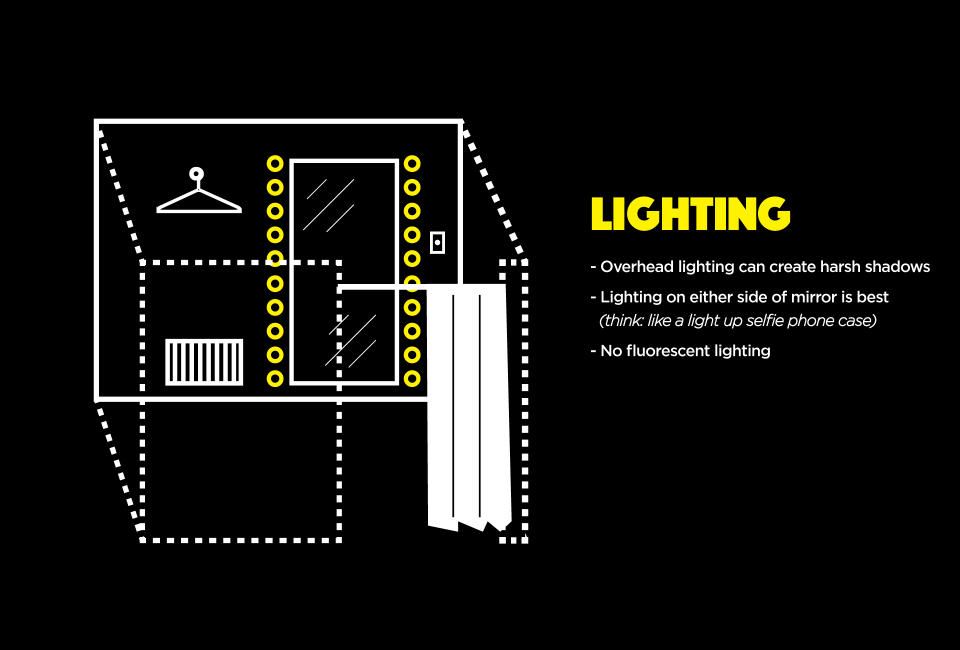The key to the perfect fitting room isn't just about 'skinny mirrors'
In a 1994 Seinfeld episode, Elaine Benes, the fictional character played by Julia Louis-Dreyfus, spends an afternoon shopping a “huge sale” at Barney’s department store in New York City. Elaine finds a dress she loves, and she thinks it loves her back. That is, until she gets home.
“I try this dress on. Stunning. Stunning. I couldn’t take my eyes off myself,” Elaine tells Jerry Seinfeld. “OK, so then I put it on at home. It looks like I’m carrying twins!”
And in that comedic moment, Elaine identified the arch nemesis of every frustrated shopper: skinny mirrors. “Skinny mirrors! They make you look, like, 10 pounds lighter!” she cries.
If Elaine’s plight sounds familiar, then you too may have fallen victim to the skinny mirror snafu, in which a particularly cheap or warped mirror reflects to you a morphed version of your size, perhaps taller and thinner than you see yourself IRL. But more on that later.
While Elaine was certainly on to something, the truth is, there’s so much more to a disheartening fitting room experiences than the culpable skinny mirror. There are actually dozens of things that affect how you feel about yourself when you try something on in-store, and retailers have struggled for years to perfect the fitting room formula.
“Fitting rooms are a psychological land mine for everybody,” Marge Laney, CEO of retail consulting company Alert Tech said in 2015. “Retailers can’t do anything about that at all, and they shouldn’t even try to address that. What they can do is ride as lightly as they can on psychological problems by creating an environment that makes the customer look and feel good.”
Laney’s son Brian, the vice president of sales and product for Alert Tech, has worked with his mother for the last 20-plus years, and talked to Yahoo Style about how he tries to help retailers be successful and shoppers comfortable.
Brian Laney says that until the 2010s, “fitting rooms were horribly utilized” and retailers really didn’t pay attention to how fitting rooms impact sales.
“Spending money on a high quality mirror is really important, but labor is also one of the largest costs that retailers spend money on,” he adds, “and they weren’t training their labor to address fitting room problems, like connecting people with associates.”
According to the National Retail Federation, more than two-thirds of shoppers who use fitting rooms are likely to buy something, and those who use fitting rooms are twice as likely to buy than people who don’t use them. Other fitting room factors that majorly affect sales: the availability of a salesperson to pull another size and the length of the fitting room line to begin with.
Some retailers have tried to bring too much technology into what should be a simple, comfortable space, which can ultimately make fitting room lines longer, says Laney. The so-called “magic mirror” craze in 2015, in which “smart” mirrors that displayed widgets and touch screen functionality to shoppers, never quite caught on, despite industry fanfare and implementation at stores like Rebecca Minkoff.
Laney says it’s because adding high-tech features to a space where shoppers already feel vulnerable adds another layer of stress to the mix. Plus, shoppers who aren’t tech savvy end up spending too much time in fitting rooms trying to figure out how to work the machinery, creating even longer fitting room lines.
So, if all this tech isn’t the answer to fitting room woes, what is? The formula for a perfect fitting room isn’t as tough as retailers make it out to be, according Laney, who boils it down in the following way: Fitting rooms shouldn’t make shoppers feel claustrophobic or like they need a flashlight; if you’re sweating before you’ve unzipped your pants, it’s too hot; if there are leftover clothes or debris from previous shoppers, that’s a deterrent for buyers.
Regarding those pesky mirrors, Yahoo Style spoke with Michael Tuts, physics department chair at Columbia University, for the skinny on how to spot a mirror you can trust. When a mirror is vertically convex (“the top and bottom of the mirror bends and bulges out in the middle”) or horizontally convex (“the sides are squeezed until the middle bulges out”), the way the light reflects off the mirror can reveal an image that isn’t true to size. Meaning that you might appear shorter and fatter or taller and thinner than you truly are.
Tuts says “flat” mirrors will the reflect the same height and width of the object (in this case, you).
“The way you could tell [a mirror is flat] is by taking in a nice straight ruler in with you — hold it vertically on the mirror and see that it touches everywhere. There should be no gaps between the ruler and the mirror surface,” Tuts explains. “Now hold it horizontally. If there are no gaps, then it is a flat mirror, whereas if you see a gap at the end of the ruler, then you are looking in a ’skinny-making’ mirror.”
The horror of all horrors when it comes to mirrors might be when the mirror itself is placed outside an individual’s fitting room, a cardinal sin according to Laney. Still, some retailers like Aritzia stand by their decision to use communal mirrors in a “spacious, well-lit environment” that “allows for a more social shopping experience and greater access to our highly knowledgeable stylists,” says an Aritzia spokesperson.
And if anything else in that fitting room is making you feel uncomfortable, consider whether you’d feel better trying on the clothes at home (depending, of course, on the store’s return policy). That’s always been this writer’s MO, and it probably would’ve helped one Elaine Benes 20 years ago, too.
Read more from Yahoo Style + Beauty:
? Angelina Jolie, One of Hollywood’s Highest Paid Stars, Wore an Affordable Everlane Outfit
? Tiffany Trump Quotes Muhammad Ali in Stylish Memorial Day Photo
? Teen Faced Her ‘Biggest Fear’ and Wore a Swimsuit at the Beach
Follow us on Instagram, Facebook, and Pinterest for nonstop inspiration delivered fresh to your feed, every day. For Twitter updates, follow @YahooStyle and @YahooBeauty.






